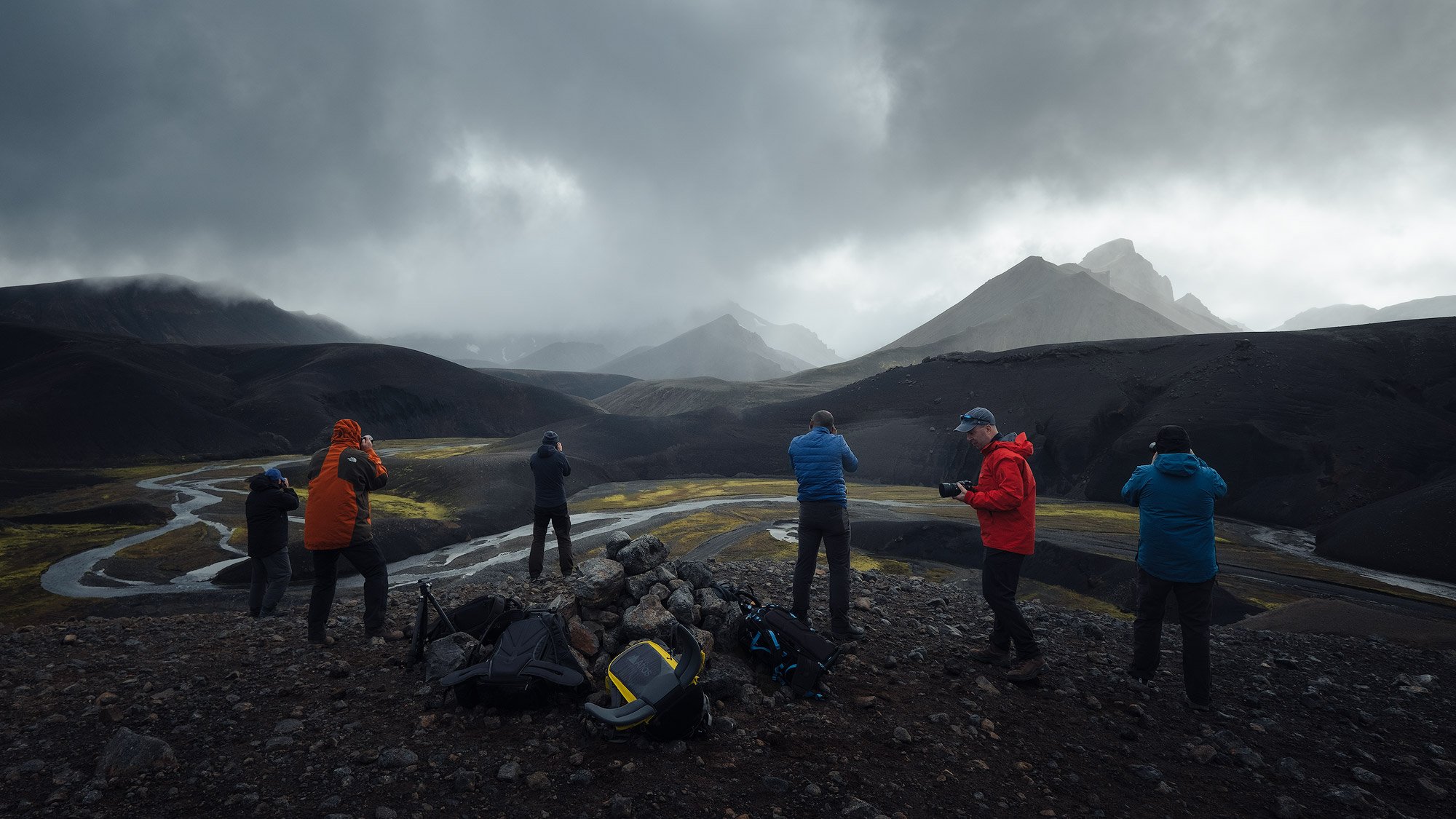Shapes & Patterns in Landscape Photography Composition
1. Introduction
As you look at a landscape scene, you may notice the natural features like plants, landforms, water, and sky. But after you appreciate the beauty of the scene, you need to change your perspective as a photographer. You need to look for basic shapes and designs that are hidden in familiar forms.
Great photos are not just about the subject, but also about the design principles that shape them. To master this skill, you need to practice seeing the world in a different way, focusing on the visual elements rather than the meaning.
Fortunately, our brains are good at filling in the gaps and completing the shapes and patterns that we see, even if they are not really there. This is very useful for photographers who want to create compelling compositions by implying triangles, circles, etc.
You don’t have to find actual shapes, you can just suggest them by arranging the elements of the scene.
2. Using Triangles to Create Dynamic
Triangles are the most effective and simple shapes to use in your images. They create a dynamic and powerful impression. You can easily form triangles with three elements in the frame, like trees, rocks, and flowers.
You don't need to connect the three points with lines, just arrange them in a triangular way.
3. Harmony with Circles
Circular shapes, whether explicit or suggested, can create a sense of harmony and unity in an image, but they are not easy to find or make compared to triangles.
You can search for natural elements that have a round outline, such as an opening in a cave, spherical stones, plants, or pools of water.
They don't have to be exact circles, just something that resembles a circular form.
4. Incorporating Human-Made Structures
Natural scenes rarely contain squares and rectangles, but they do exist sometimes, like the water channels carved in limestone plateaux.
You can also find these shapes in human-made structures, such as a barn, a house doorway, or ranch-style wooden fencing around a property.
These shapes can be used in the composition to convey a feeling of solidity and confidence in the image.
5. Enhancing Depth with Diagonal Lines
These lines create a dynamic and graphic effect in any image. They can enhance the sense of depth and dimension in the photo and draw the viewer's eye along a strong direction.
However, they can also be distracting if they are not used intentionally, so you should be careful not to let them overshadow the main subject.
You can find many natural sources of diagonal lines, such as coastlines, rivers, branches, and mountains. You can use them to improve your composition if needed.
They usually work best when they start or end near a corner of the image. This way, they contrast more with the straight edges of the frame and create more tension in the image.
You should also pay attention to where the diagonal lines lead the viewer. If they don't point to something interesting or relevant, the viewer will lose interest quickly.
The good news is that you can change the direction of the diagonals by changing your viewpoint. Shooting from a low angle is often a good technique.
6. Vertical Lines for Strength
Trees are the most common examples of vertical lines in nature, and they can create powerful images that convey a sense of strength and mystery.
When you explore a forest, look for a group of trees that allows you to capture a more abstract photo. Then you need to use your skill and patience to find the best angle to reduce the overlap of tree trunks, and to choose which trees to keep and which to leave out of the final image.
Misty, bright mornings can help you create some atmosphere in your forest photos and prevent overexposed highlights in the sky peeking through the trees.
7. Layers and Horizontal Lines
When you take a landscape photo, you should always try to keep the horizon line straight. This is the most common line in any scenery, and our eyes expect it to be level.
A tilted horizon can ruin a great shot and make it look unprofessional.
Other horizontal lines can also affect your images, creating a sense of layers or boundaries in the composition.
For example, when the sun shines behind a series of mountains and there is fog or mist between them, you can see horizontal lines of different shades. If you use a long telephoto lens, which makes the distances look shorter, you can create an image where the mountains look like they are piled up on each other."
8. Conclusion
Shapes are often the key to a good composition. They can be subtle or obvious, static or dynamic. Your role as a photographer is to spot these shapes and use them to create a captivating image.
When you are out taking photos, adopt a curious and questioning mindset like a child. Ask yourself “why” questions about everything you see. Do you see an interesting foreground or a fine detail in nature? Why are you drawn to it? Why do you think it’s worth photographing? Why did it catch your eye?
Most likely, it’s because of the shapes that intrigued you.
Your thoughts…?
Have you experimented with shapes and patterns in your landscape photography compositions?
Let me know in the comments!
PHOTOGRAPHY WORKSHOPS
Want to improve your photography?
Join me in one of my photography workshops:













